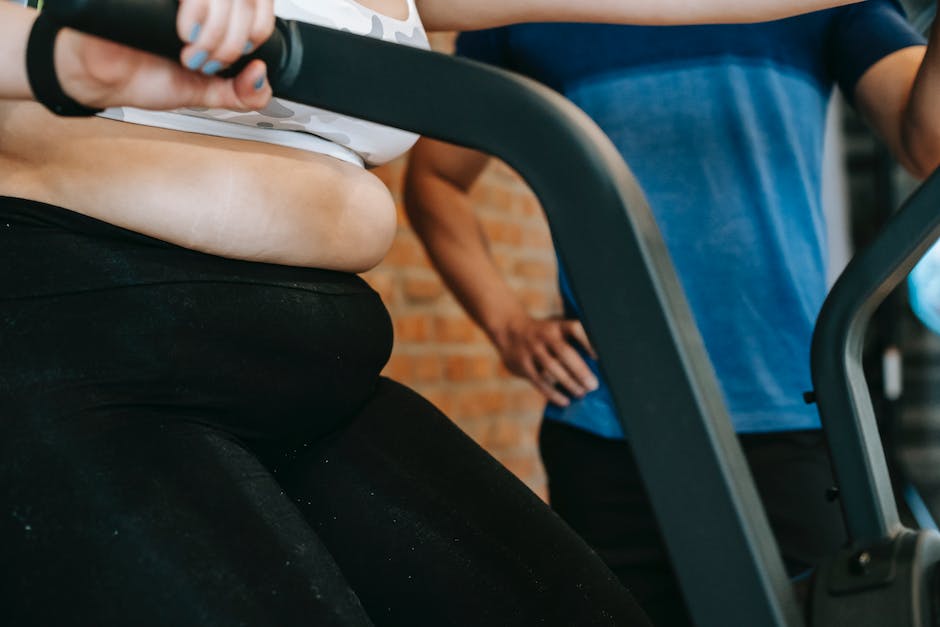
How Often To Workout For Weight Loss?
If you’re trying to lose weight but aren’t sure how often to hit the gym, then read on. We’ll discuss the different ways and schedules you can use to optimize your workout routine for weight loss. From how many days a week to how intense your sessions should be, we’ll cover all the details of a well-rounded weight-loss workout plan.
List of Content
- 1. What’s the Ideal Frequency for Weight Loss Workouts?
- 2. Extent of Intensity Matters Too
- 3. Finding the Balance Between Right Frequency and Intensity
- 4. Structuring Your Workout Plan
- 5. Tips to Fit Workouts Into Your Schedule
- 6. Take Home Message
- My Awnswers to your Questions
1. What’s the Ideal Frequency for Weight Loss Workouts?
The ideal frequency for weight loss workouts depends on your goals. Whether you want to lose fat or tone your muscles, there is no one-size-fits-all approach to getting in shape. Here are some frequencies you should consider for your weight loss routine:
- High Frequency: If you want to lose fat, working out multiple times per week may be your best bet. Training several times a week gives your body the opportunity to recover and repair, while still pushing it hard enough to produce results.
- Moderate Frequency: This is a good option for those who want to lose fat and tone up at the same time. Working out 3-4 times a week allows your body to build muscle and get the metabolism revving, while still providing time for recovery and rest.
- Low Frequency: If you’re looking to tone up and not lose much fat, then a low-frequency weight loss routine is probably your best bet. Training two times per week with short breaks in between is enough to work the muscles, while avoiding excessive fatigue.
The ideal frequency for weight loss workouts is based on your goals and training experience. If you’re a beginner, then a low-frequency routine may be the right choice for you. If you want to slim down quickly, then a high-frequency routine is probably your best bet. Talk to a trainer or coach to figure out what’s best for you.
For the best results, make sure you vary your routine every week so that you don’t get bored with the same exercises. Make sure you’re including strength training, cardio and flexibility training in your workouts. This will help ensure you get maximum benefits from your workouts.

2. Extent of Intensity Matters Too
When it comes to working out, pushing yourself is essential. However, it is also important to know that there is a time and a place to push yourself and it can vary depending on the intensity of the workout and your current fitness level. As such, it is important to remember that the .
For example, if you are a beginner and still trying to learn the ropes of an exercise, it is important to practice the exercise continually over the days with low levels of intensity. This way, you can slowly and gradually increase your intensity over time, thus not stressing out your body all at once.
Moreover, even if you are an experienced fitness enthusiast, starting off with high intensity may still be difficult for you. When you are used to exercising at a moderate level and then suddenly have to increase your intensity, your body may not be ready yet. Here are some tips to help:
• Warm up thoroughly. A good warm up is essential to make sure your muscles and joints are properly prepared for the workout that follows.
• Take regular breaks. Pausing for a short period to rest and recuperate throughout your workout can help you manage the intensity levels better.
• Watch your nutrition. Maintaining a healthy diet can make sure your body has sufficient energy to work out with more intensity.
In conclusion, the extent of intensity is an essential factor to consider when it comes to working out. Knowing when and how to adjust your intensity level can help ensure successful and injury-free workouts.
3. Finding the Balance Between Right Frequency and Intensity
Finding the right balance between frequency and intensity in your exercise routine can be daunting, but it is critical for achieving maximum results. Here are a few tips:
- Listen to your body: Make sure to pay attention to your body during exercise. If you are feeling overly fatigued, take a rest day. Make sure to keep tabs on how you are feeling before, during, and after your workout routine.
- Incorporate rest days: Instead of exercising every day, incorporate at least one day of rest and recovery into your routine. Rest days are an important part of any workout regimen because they give your body time to rest and rebuild before the next workout.
You should also vary your intensity when exercising. This can be accomplished with intervals, pyramids, or any other form of interval training that will help you effectively increase your intensity while still allowing for rest and recovery. High-intensity exercise can help you burn more calories in a short amount of time, but can also be more stressful on your body.
Additionally, if you are looking to increase your strength, remember that exercising lighter and more frequently is better than lifting heavy weights with long breaks in between. Lifting heavy weights only a few times a week won’t give your body any time to build muscle and strength, whereas if you lift lighter weights more often, your body will have time to recover and build the muscles.
In summary, finding the right balance between frequency and intensity in your exercise routine depends on your goals and needs. Pay attention to your body and be sure to incorporate rest days, intervals, and light weights, as necessary to achieve the best results.
4. Structuring Your Workout Plan
Creating a well-rounded and effective workout plan is essential for success. However, coming up with just the right combination of exercises can be hard to figure out. Below are four key steps to to help you reach your fitness goals:
- Know Your Goals: First and foremost, you need to know what your goals are. Are you trying to build muscle, lose weight, improve endurance, or all of the above? Understanding your fitness goals will help you pick the best exercises and determine how much time you will need to spend on each one.
- Choose Your Exercises: After you know what your goals are, choose the exercises that will best help you reach them. You should aim to include a mixture of aerobic and strength training exercises. Group similar exercises together, and vary them to avoid boredom or burnout.
- Create a Schedule: Creating a schedule takes the guesswork out of your workout plan. Decide how many days a week you are going to exercise, and find blocks of time to fit it in. It can also be helpful to keep a calendar or to-do list to track your progress and identify any areas for improvement.
- Monitor Your Results: The only way to know if you’re making progress is to track your results. Measure your body composition, strength, and endurance, and take note of any physical or mental improvements. Regularly monitoring your results will help you make necessary adjustments and stay motivated to continue reaching your goals.
Whether you’re a beginner or an experienced exerciser, is essential for success. Make sure to think through each step in order to create a well-rounded and effective plan that is tailored to your specific goals.
5. Tips to Fit Workouts Into Your Schedule
Working out may seem like it takes up too much time in your schedule, but there are various ways you can incorporate some physical activity without having to cut into your other commitments. Read on for five tips to help you fit workouts into your schedule.
Prioritize your workouts: Put workouts at the top of your to-do list, and make them a priority. Planning and scheduling time for physical activity will help you stay motivated and consistent. It also makes it harder to skip out and more likely that you’ll be able to stick to it.
Tackle small reminders: Set up small reminders to spur you into action. For example, have a post-it or journal entry stuck to your fridge to remind you to fit some quick exercise into your day or layer your workout clothes the night before so you’re ready first thing. It can be harder to make excuses when you’ve already taken the steps to exercise.
Think outside the box: You don’t need to go to a health club or spend hours lifting weights. Look for activities that can become part of your routine. Try taking the stairs instead of the elevator. Maybe build in a “walking meeting” if you or your colleagues are having a discussion while at work. During your lunch break, try stretching, having a little walk or even just getting up and doing some jumping jacks. These don’t take up more than 15 minutes, but can all make for great physical activity.
Create a home gym: Even if you’re too busy to make it to a gym, you can still exercise at home. Try investing in simple, affordable equipment like a yoga mat, skipping rope, or a set of weights. Getting some quick and easy exercise equipment for home can be an excellent way to save time whilst still getting in a good workout.
6. Take Home Message
This section presents a quick summary of the key take-home message from the post.
- A healthy lifestyle is important: Take care of your physical and mental health by eating healthy, exercising regularly, and getting enough sleep.
- Be mindful of your mental health: Pay attention to your feelings and take steps to address any issues before they become unmanageable.
- Take breaks and have fun: Taking regular breaks can help you stay productive, while having fun can help you destress and relax.
- Set realistic goals: Have short and long-term goals and be realistic about what you can achieve.
Mindfulness can be an effective way to manage stress and anxiety. It can help you become more aware of your thoughts and feelings, and better understand their effects on your behaviours and reactions. There are many mindfulness techniques that you can use, such as meditation, yoga, and breathing exercises.
It’s important to remember that self-care is an ongoing process. It’s normal to have ups and downs, and it’s important to take the time to nurture yourself and take care of your needs. Don’t wait until you have a mental health issue to address it – taking care of yourself everyday can help prevent long-term problems.
My Awnswers to your Questions
Q: How often should I workout to lose weight?
A: Generally speaking, you should be aiming for at least 3 to 5 times per week of moderate-intensity workouts. This will help you create the necessary caloric deficit to begin losing weight. However, everyone is different, so be sure to consult with your doctor or a personal trainer to get the most out of your workout routine and see the best results.
Q: Is it better to do a longer workout once or shorter workouts multiple times?
A: Technically speaking, the number of days and total amount of time spent exercising are not as important as the intensity and duration of each workout session. So, both a longer, single workout or shorter, multiple workouts can have the same weight loss benefits.
Q: Are there any specific activities that are better for weight loss?
A: Yes! Generally speaking, cardiovascular exercise like running, cycling, swimming, and brisk walking are all great exercises for burning calories and losing weight. Strength training can also be beneficial in fatty areas as muscle tissue burns more calories than fat tissue. However, it’s important to talk to a personal trainer or physician to create an exercise plan that works best for you.
Q: What happens if I don’t see any results after a few weeks?
A: Don’t worry! It’s normal to not see any results in the first few weeks since it takes some time for your body to adjust to a new routine. It’s also possible that your diet may need some adjustments too. Be sure to give your workout routine some time and speak to a doctor or nutritionist to ensure that your diet is also helping you meet your weight loss goals.
So there you have it—a few workout regimens and a good starting point for finding the best program for your own weight-loss goals. With the right combination of calorie restriction and exercise, you’re sure to get the body you want. Plus, regular workouts also help you strengthen and condition your body, so you can live a healthier, happier life. Good luck, and happy sweating!

